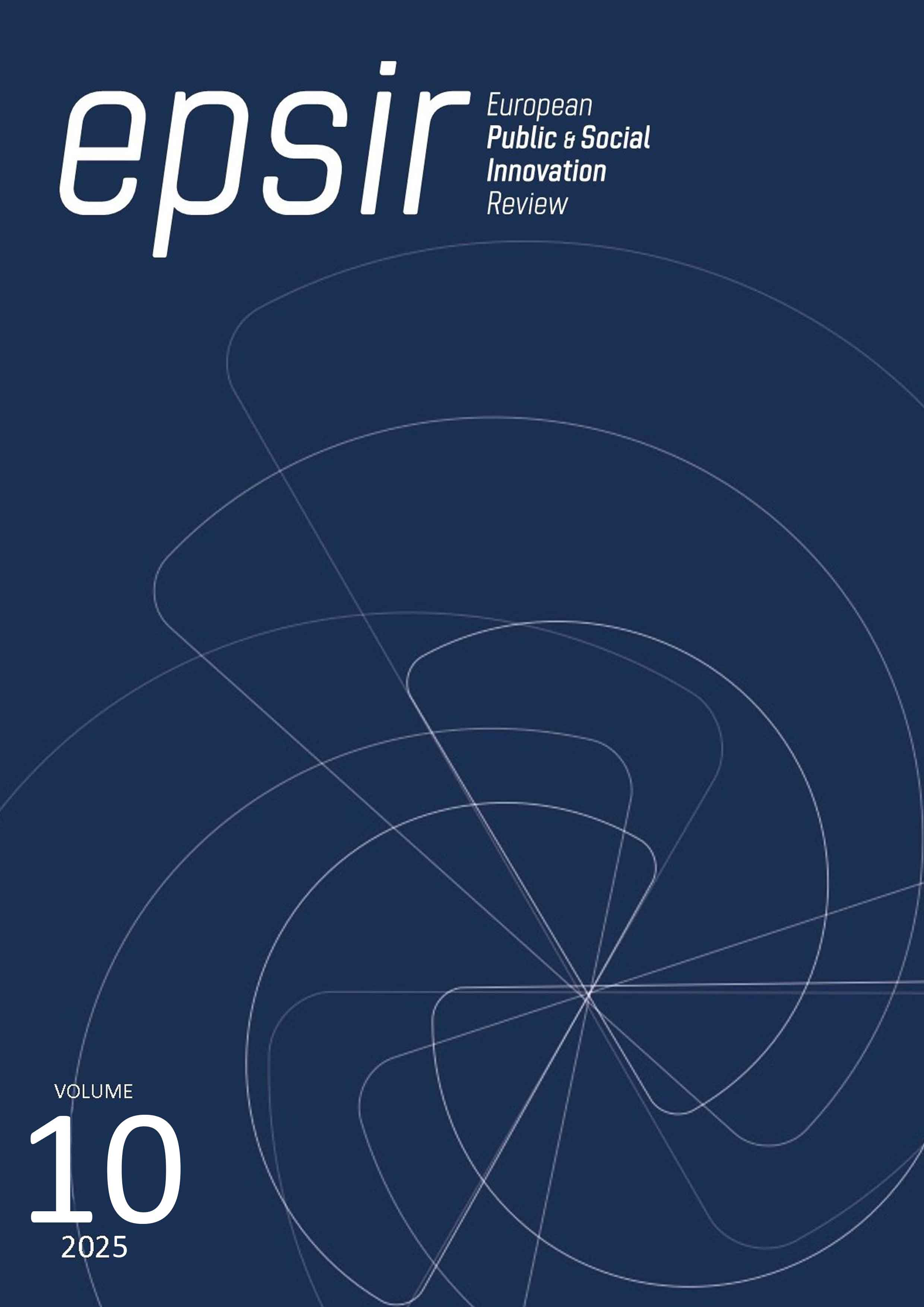Identificación de necesidades para la digitalización en el conglomerado vitivinícola, Caso Guanajuato
DOI :
https://doi.org/10.31637/epsir-2025-1273Mots-clés :
Digitalización, Vino, Emprendedores, Innovación Social, Contenidos Digitales, Marketing Digital, Liga del Vino, GuanajuatoRésumé
Introducción: El presente trabajo identificó las necesidades para la digitalización que tenían empresas y organizaciones emprendedoras del Estado de Guanajuato pertenecientes al conglomerado Vitivinícola, enfocándonos en el área de la innovación social. Metodología: En la realización de la investigación se usó una metodología cualitativa, descriptiva usando como teoría el Índice Resindex que mide la innovación social en las empresas y se relacionó con las necesidades de comunicación digital del sector. El instrumento usado se aplicó a los emprendedores de la zona, así como a los organismos nacionales e internacionales del sector. A nivel regional se trabajó con los emprendedores, así como con la Liga Vitivinícola de Guanajuato y el Observatorio Turístico del Estado de Guanajuato. A nivel internacional se entrevistó a los desarrolladores del Observatorio Argentino y a los desarrolladores del Observatorio Suizo Vitivinícola. Resultados Los descubrimientos fueron interesantes dado que fundamentan la información para el desarrollo de estrategias de marketing digital, sistemas de información y desarrollo de aplicaciones móviles y de sitios web en la región, a nivel nacional e incluso internacional. Discusión: Las conclusiones corroboraron la necesidad de la digitalización en el conglomerado Vitivinícola. Sin embargo, solo son esfuerzos aislados para innovar en el área digital.
Téléchargements
Références
Abraham, L., Alturria, L., Forzar, A., y Cereza, A. (2014). Propuesta de indicadores de sustentabilidad para la producción de vid en Mendoza, Argentina. Revista de la Facultad de Ciencias Agrarias, 46 (1), 161-180. https://bdigital.uncu.edu.ar/6453
Andrade, D. (2016). Estrategias de marketing digital en la promoción de Marca Ciudad. Revista EAN, 80, 59-72. http://www.scielo.org.co/scielo.php?script=sci_arttext&pid=S0120-81602016000100005 DOI: https://doi.org/10.21158/01208160.n80.2016.1457
Consejo Vitivinícola Mexicano. (2018). Plan Rector 2018. https://uvayvino.org.mx/html/docs/plan_rector_2018.pdf
Consejo Vitivinícola Mexicano. (2022). Consejo Vitivinícola Mexicano. El vino mexicano en números. Expansión. https://bit.ly/4fEQI7O
Durazo, E. (2020, 04 de julio). Los retos de la industria vitivinícola en México. Expansión. https://bit.ly/3Asmapp
Esquivel, G. (2020). Los impactos económicos de la pandemia en México. Banco de México: {D442A596-6F43-D1B5-6686-64A2CF2F371B}.pdf (banxico.org.mx)
Gerschman, R. (2017). Guía Catadores del Vino Mexicano. Editorial Planeta México
IWSR Drinks Market. (2023). Indice de Intercambio de bebidas en el mercado internacional. https://bit.ly/4fCbuop
Kemp S. (2022, 15 de agosto). Tendencias de redes sociales al 2022. Hootsuite. https://blog.hootsuite.com/es/informe-digital-estadisticas-de-redes-sociales/
Loose, S., y Del Rey, R. (2022). Prowine Business Report 2021. https://bit.ly/4cgKxnf
López, A. (2018). Creación de un observatorio tecnológico en innovación social para el sector vitivinícola en México. Revista de Arquitectura y Diseño, 2(3), 8-20. https://acortar.link/Se8uUN
López, A. (2023). Creación de un Observatorio Tecnológico en Innovación Social para el conglomerado Vitivinícola en el estado de Guanajuato. (Tesis Doctoral). Universidad del Valle de Atemajac, México.
Maestre, C., Aguilera, C., Luena, C., Maldonado, A, y García, I. (2020). Preguntas al Parlamento Europeo: Impacto de la crisis del COVID-19 en el sector vitivinícola. https://bit.ly/46Hh2d3
Montiel, J.C., Lozano, M.C., y Díaz, I. (2017). Las Prácticas de Promoción digital de las Vinícolas en el Valle de Guadalupe, B.C.; México y su contribución en la construcción de la Marca Destino, una perspectiva desde las ciencias sociales y administrativas. Revista Turydes: Turismo y Desarrollo, 10(22). https://www.eumed.net/rev/turydes/22/promocion-digital-bodegas.html
Organización Internacional de la Viña y el Vino [OIV] (2021). Digital trends applied to the vine and wine sector. Organización Internacional de la Viña y el Vino [OIV] https://bit.ly/4fEbq7B
Reyes, C. (2022). El Mercado del vino en México. DOC2022911658.pdf (icex.es)
Sbriglia, P., y Mazzoni, C. (2020). Whatever it takes La politica economica nell´epoca del COVID-19. https://bit.ly/3Aqz0V7
Secretaría de Turismo de Guanajuato. (2024). Ruta de la Independencia. https://cedocvirtual.sectur.gob.mx/janium/Documentos/11573.pdf
Secretaría del Trabajo y Previsión Social [STPS]. (2020). Diagnóstico del Mercado Laboral del Estado de Guanajuato 2019. Secretaría de Trabajo y Previsión Social [STPS]. Guanajuato.pdf (observatoriolaboral.gob.mx)
Simonato, F. R. (2018). La innovación en el área comercial a través de la gestión de las experiencias. Ciencias Administrativas, (11), 63-79. https://www.redalyc.org/articulo.oa?id=511654337006 DOI: https://doi.org/10.24215/23143738e019
Sinnergiak Social Innovation. (2013). Resindex. Un índice para medir la innovación social. https://n9.cl/bbcrn7
Tecnovino. (2021). El impacto de la pandemia de covid-19 en el sector del vino: análisis en España y en más mercados de interés. https://n9.cl/30f3nj
Toledo Chambilla, Andrés. (2021). Influencia del marketing digital en las empresas de servicio gastronómico durante el covid-19. Revista Investigación y Negocios, 14(24), 20-29. https://doi.org/10.38147/invneg.v14i24.144 DOI: https://doi.org/10.38147/invneg.v14i24.144
Téléchargements
Publiée
Comment citer
Numéro
Rubrique
Licence
© Adriana López Barberena, Laura Elena Zárate Negrete 2025

Ce travail est disponible sous licence Creative Commons Attribution - Pas d'Utilisation Commerciale - Pas de Modification 4.0 International.
Authors who publish with this journal agree to the following terms:- Authors retain copyright and grant the journal right of first publication with the work simultaneously licensed under Creative Commons Non Commercial, No Derivatives Attribution 4.0. International (CC BY-NC-ND 4.0.), that allows others to share the work with an acknowledgement of the work's authorship and initial publication in this journal.
- Authors are able to enter into separate, additional contractual arrangements for the non-exclusive distribution of the journal's published version of the work (e.g., post it to an institutional repository or publish it in a book), with an acknowledgement of its initial publication in this journal.
- Authors are permitted and encouraged to post their work online (e.g., in institutional repositories or on their website) prior to and during the submission process, as it can lead to productive exchanges, as well as earlier and greater citation of published work (See The Effect of Open Access).




